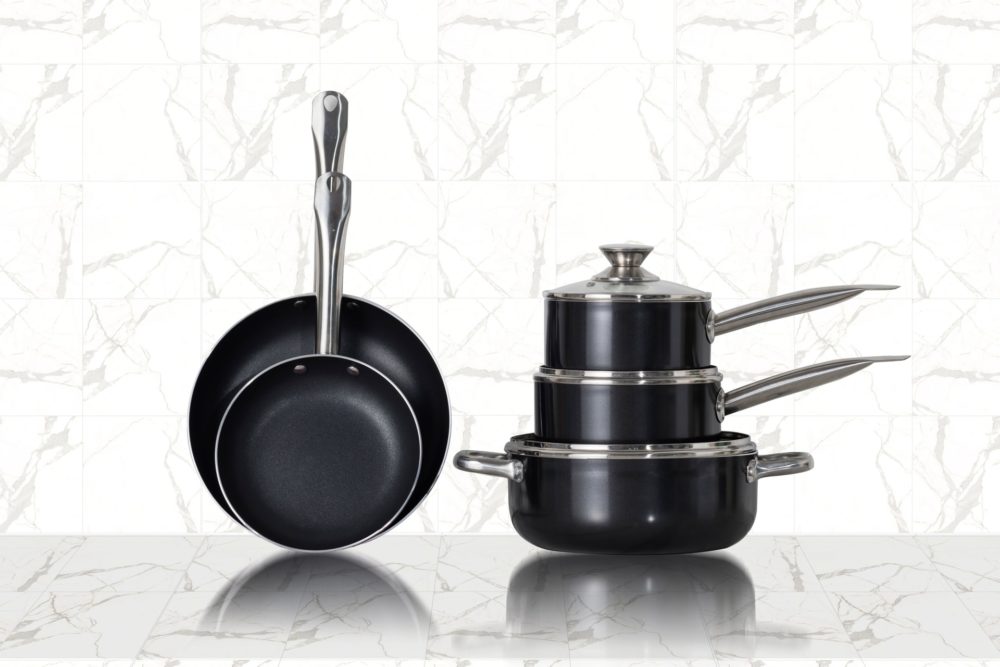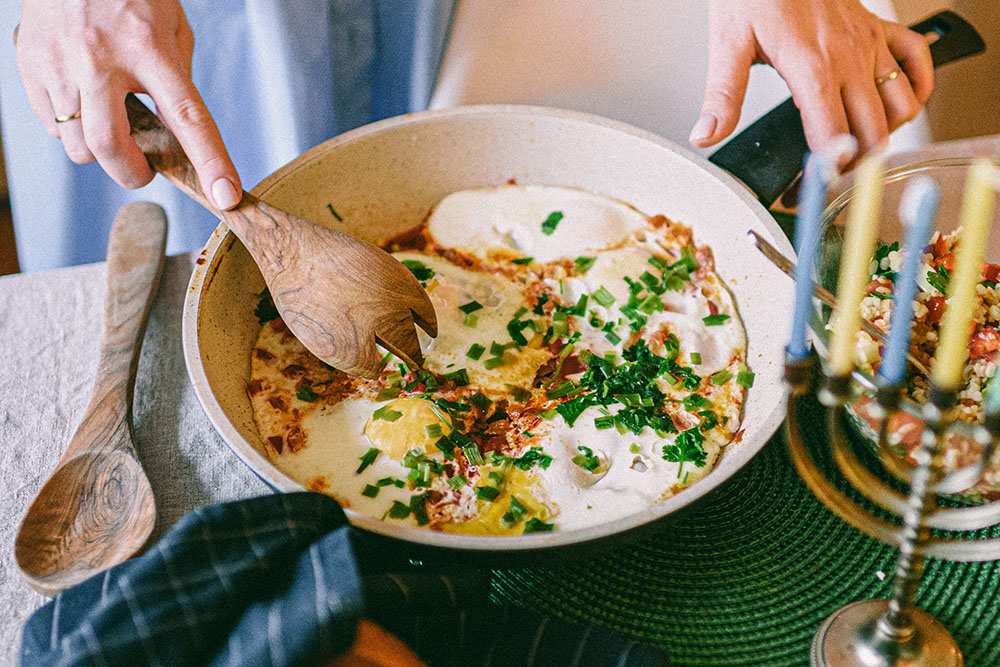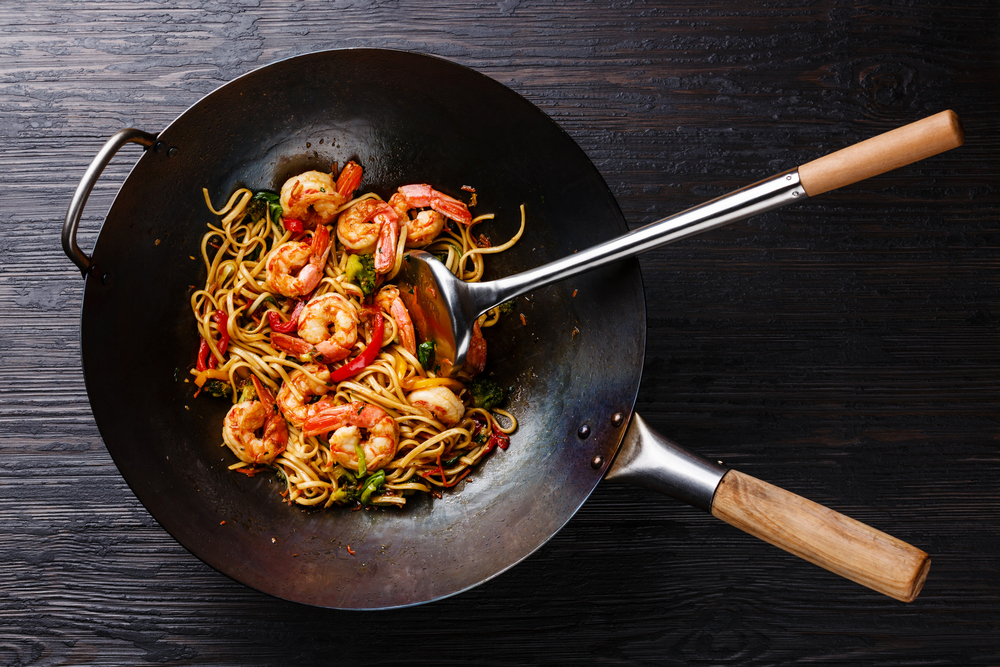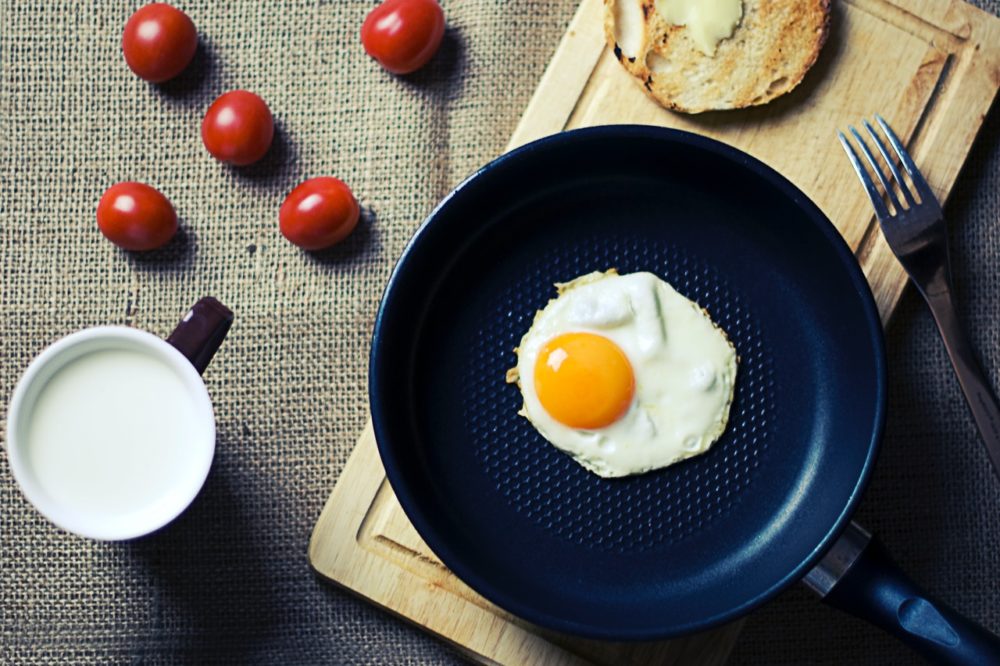There’s been a lot of talk regarding non-toxic cookware in recent years, and one of the brands frequently reviewed or recommended is GreenLife.
Today I’ll be discussing whether or not GreenLife’s cookware is truly safe to use.
GreenLife created Thermolon™, which they claim is “the first natural ceramic nonstick coating.”
Thermolon has a high resistance to heat, so unlike traditional non-stick coatings, it won’t chip or peel when overheated. It’s also free of PFAS, PFOA, lead, and cadmium.
Before we delve into the specifics of GreenLife’s non-stick coating, let’s first look at why traditional non-stick cookware is problematic.
Why Teflon is bad
You may have heard of Teflon - that’s the brand name for PTFE (polytetrafluoroethylene), which is used in traditional non-stick coating. PTFE has been frequently used commercially since the 1940s.
It doesn’t react with other chemicals, which means it provides a frictionless, stable surface which makes it ideal for making non-stick coatings on pots and pans. However, over the years numerous concerns have been raised around the impacts of PTFE.
While PTFE is not known to cause cancer, perfluorooctanoic acid (PFOA), also known as C8, which is used in the manufacturing process of PTFE coating, is considered a carcinogen.
PFOA coating can release toxic fumes into your home which may cause people to suffer flu-like symptoms.
Among the most vulnerable to these fumes are babies, kids, and pets. Not only this, but PFOA is also a major environmental pollutant.
PFOA coating has been phased out over the years, but small traces of it will still be found in our blood, and high levels of PFOA has been linked to cancer, reduced fertility, and thyroid disorders, among other illnesses and diseases in those who have been overexposed to the chemicals.
So just because a product claims to be PFOA-free, does not automatically mean it is safe, and many brands hide behind this claim. The real question is whether a brand uses PTFE or PFOS, which is used as a replacement for PFOA.
What about GreenLife?
Thankfully, GreenLife’s ceramic, non-stick coating is made of Thermolon, which is manufactured without PFAS or PFOA and does not contain any PTFE, lead, or cadmium.
It is made from Silicon which is basically sand that has been transformed into a sprayable solution and then cured onto the pan in the oven.
Unlike traditional non-stick coatings, Thermolon is 100% safe to use in contact with foods, even when heated.
According to GreenLife, because there are no potentially dangerous chemicals in these pans there is no chance of emitting toxic fumes, even if accidentally overheated.
Thermolon cookware can withstand temperatures up to 450°C/850°F - something that would not be safe to do with traditional nonstick coatings.
For added peace of mind, Thermolon has been certified by third-party testing labs as conforming to international regular food contact standards set by the US FDA (USA Food & Drug Administration) and the German LFGB.
As well as this, the coating is also certified by the Swiss government and KTR (authoritative test institute certified by Korea Laboratory Accreditation) as conforming to their standards.
Aluminum
Most of GreenLife’s pans are made from aluminum. Aluminum is often used in cookware as it is lightweight and has some of the best heat conducting properties, second only to gold and copper.
This makes it perfect for providing even heating and minimizing hot spots, which can overall provide you with more consistent cooking results.
However, it is worth noting that as aluminum reacts to acids (such as citric acids or the acids in tomatoes) we need to protect it from contact with food, which is usually done either by coating the aluminum or by anodizing it.
GreenLife claims that no aluminum will ever be in contact with your food during use due to the protection of the coating, however, the larger concern is when the non-stick coating starts to wear down, which is always going to be the case with non-stick cookware.
The World Health Organization estimates that on average adults can consume more than 50 milligrams of aluminum daily without this causing them harm.
Despite this, it’s worth remembering that when your cookware is heated, aluminum dissolves more easily if your pans are worn or pitted. The longer your food is cooked or stored in aluminum, the greater the amount that gets into the food.
So while GreenLife’s pans are 100% safe when you first use them, they may become less safe depending on how much you use them and how worn they are.
A few scratches won’t harm anyone, but while the Thermolon coating is designed to be long-lasting, if used incorrectly or overheated it may wear down a lot faster than expected. In this case, we’d advise you to replace your cookware if it is very scratched or damaged.
Caring for GreenLife pans
There are a few things you can do to prolong the nonstick coating of your GreenLife pans, which will keep them as safe as possible and prevent premature damage or excessive wear and tear.
- Do not use spray oil - use regular oil or butter instead
- Avoid high heat - use low-mid heat only
- Use wood or nylon utensils rather than metal ones
- Let the pan cool down before washing
- Use a soft sponge to prevent scratching
Final Verdict
Overall, we can’t find any major health concerns with GreenLife pans as their coating is made from Thermolon, which is free from PFAS and PFOA, and does not contain any PTFE, lead, or cadmium.
This makes it a far safer alternative to Teflon alternatives which are manufactured using PFOA - which is now considered a risk to our health and the environment.
Some researchers have raised questions around the composition of Thermolon, suggesting we need more information and tests to be sure if it is truly non-toxic non-stick cookware.
The other potential risk is how quickly the non-stick coating will wear down, as if overheated or scratched there is a risk of exposure to the aluminum material, which the nonstick coating acts as a barrier to.






